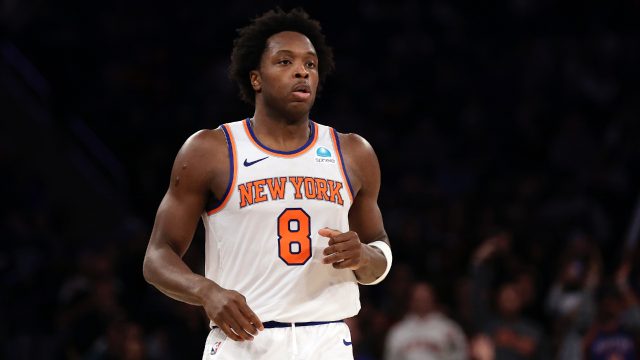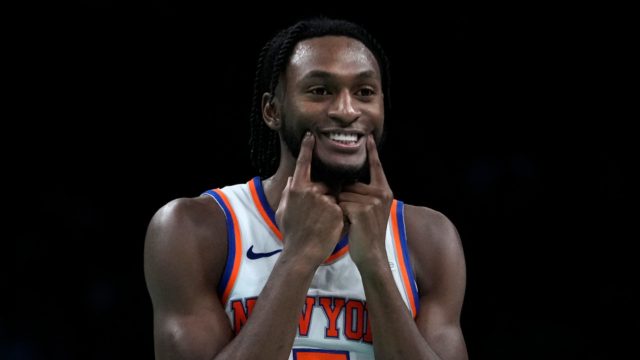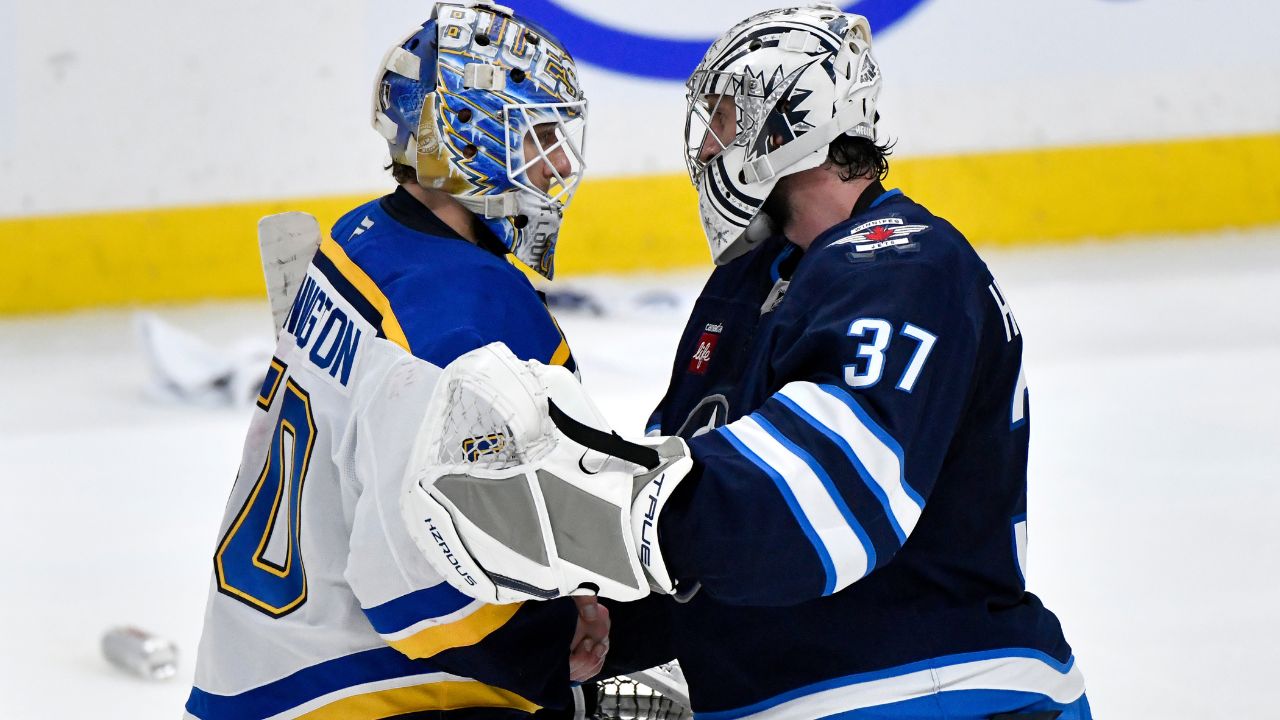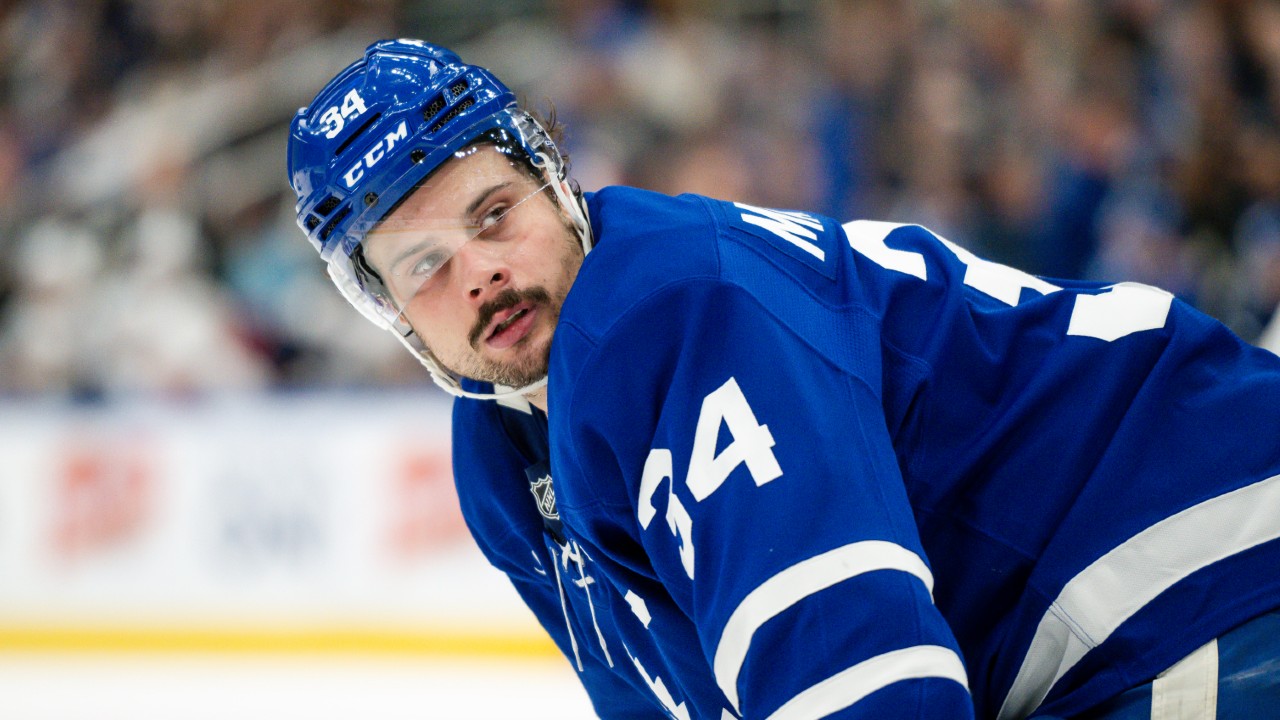
To new beginnings.
There aren’t many moments in the timeline of an NBA team when you can delineate the end of something and the start of something new and different.
Fitting for the Toronto Raptors that they had theirs take place on New Year’s Day as they hosted the Cleveland Cavaliers, Toronto’s first action following a shape-shifting trade that delivered them RJ Barrett and Immanuel Quickley from the New York Knicks in exchange for OG Anunoby, Precious Achiuwa and Malachi Flynn.
The move almost made it official: The Raptors’ championship past is behind them. Whatever they become next lies ahead.
Before the ball went up, Raptors head coach Darko Rajakovic wouldn’t commit to how he was going to use Barrett and Quickley, mouthing words that added up to the notion that role definition would be fluid, a work in progress etc.
And then he — quite predictably — started them both, giving the people what they wanted: A good look at the new look Raptors.
It gave Barrett and the fans in the building a nice moment when the kid who grew up in Mississauga — and who used to come to Raptors games with his Dad, former Canadian Olympian Rowan Barrett so he could meet various NBA players as they came through town — was introduced as a Raptor for the first time.
The fans greeted Barrett like a long-lost son. Barrett is the eighth Canadian to play for the Raptors, but the first to be here in the prime of his career with an opportunity to be a long-term starter — and perhaps star — for years to come. If everything breaks right Barrett could be a franchise fixture for a decade. No guarantees, but it’s nice to think about.
The sound for Quickley was almost as impressive as the people in the building already seemed to be aware of what the 24-year-old point guard from Kentucky represents: A significant injection of talent and skill, with the upside and positional fit to be a running mate for Scottie Barnes for years.
As a bonus, the Raptor got their new era underway with a win as they outlasted the undermanned Cleveland Cavaliers 124-121 to improve their record to 13-20 before they set out on a difficult six-game road trip that kicks off what projects to be a very challenging stretch before the Feb. 8th trade deadline.
It was a pair of Barrett free throws with seven seconds left that iced the win as Toronto got one last stop after getting somewhat lucky as the Cavaliers missed seven straight shots — at least three of them wide-open corners threes — after they had taken the lead with 4:43 to play, completing a comeback from being down 19 in the second quarter.
The Raptors got just enough offence down the stretch, the key bucket coming on a 10-of-10 difficulty lay-up from Barnes as he swooped around Cavaliers centre Jarrett Allen to put the Raptors up for good with 1:30 to play.
It may have been a new-look lineup, but the Raptors old guard carried the day as Pascal Siakam led all scorers with 36 points on 13-of-20 shooting in 40 minutes of floor time, while Barnes finished with 20 points, six rebounds and five assists. The newcomers did their part: Barrett had 19 points and nine rebounds in his Raptors debut while Quickley added 14 points, six rebounds and three assists. All five Raptors starters were in double figures.
The Cavaliers — 18-15 — were led by Donovan Mitchell, who had 26 points, seven rebounds and seven assists but failed to convert a number of chances down the stretch that could have changed the outcome.
Still, what was almost as important as the result was that even though Quickley and Barrett had just a morning shootaround and a couple of meetings to familiarize themselves with their new team, they each gave early indications of what they should be able to provide.
Quickley, simply, gives the Raptors a combination of skill and athleticism at point guard they haven’t had for some time. He shoots as well or better from deep as Fred VanVleet or Kyle Lowry and can get to the paint and finish more easily than either. Not to say Quickley — who made just the 28th start of his career Monday night — is about to supplant either of those two on the Raptors all-time point guard roster, just that he has the tools and will have the runway to make it reasonable to hope that he might.
Quickley’s first bucket as a Raptors was a squared-up three-pointer set up by Barrett’s dribble penetration, but it was a pick-and-roll he ran with Raptors centre Jakob Poeltl in the first quarter that likely brought a twinkle to the eye of Rajakovic.
After Poeltl ventured up above the three-point arc to set a screen for Quickley, both Cavaliers defenders cheated up and over to cover off both the possibility of a step-back three and the threat of Quickley diving into the paint for one of his patented pull-up floaters.
As a result, as Poeltl rolled to paint there was all kinds of room to operate and when Quickley found him with a deft bounce pass, the big Austrian centre was able to thunder down the lane for a wide-open dunk.
“The NBA is a pick-and-roll game for sure. I’m a big believer in making the right decisions and playing the right way and moving the ball and engaging all five players on the court,” said Rajakovic. “But a lot of great things can happen when you initiate offence in the pick-and-roll and that’s something we’re going to monitor with Immanuel, because he’s really good pick-and-roll player. But also his playmaking, setting up his teammates is something that he needs to make a next step in his development.”
Fundamentally, his ability to shoot changes the dimensions of the court for a Raptors team that has struggled with spacing all season.
“The first thing when you have a player of that calibre is pick up points on defence are different,” said Rajakovic. “The screens can be higher now, not two steps inside the three-point line, and that creates more room. That creates more room for everybody to make plays. And I’m really excited to unlock as much as possible his game on the offensive end through and pick and rolls.”
For his part, Barrett seemed to simply enjoy and benefit from the opportunity to grab the ball and run. Two of his three first-half buckets came from 1-on-1 attacks in transition as Barrett created contact and finished with his left hand, his trademark. Barrett’s putback of his own miss early in the second quarter put Toronto up by 11 on their way to expanding their lead to game-high 19 when Quickley scored on a baseline floater after he took advantage of an aggressive Cavaliers closeout that ran him off a corner three-point attempt.
The Cavaliers — playing without Evan Mobley (knee) and Darius Garland (jaw) — were able to cut the Raptors lead to 67-59 at the half as Cleveland’s Donovan Mitchell hit a tough jump shot just before the horn, but it was by any measure a positive start.
While losing a pair of quality, versatile defenders like Anunoby and Achiuwa will likely come back to haunt the Raptors at some point in the near future, the challenges were offset in the short term because in adding Barrett and Quickley to a lineup featuring Siakam, Schroder and Barnes, the Raptors almost always had three players who could initiate offence on the floor at all times and lineups that included Gary Trent Jr. suddenly provided Rajakovic with floor spacing that was bordering on modern.
But it helps that for now the Raptors still have Siakam, who remains the team’s best one-man scoring option. He scored 13 points on his own in the third quarter as the Raptors barely kept the Cavaliers at bay and helped Toronto preserve a seven-point lead to start the fourth quarter.
They needed all the cushion they could get, but in the end were able to hold on, getting their new beginning off to a nice start.






